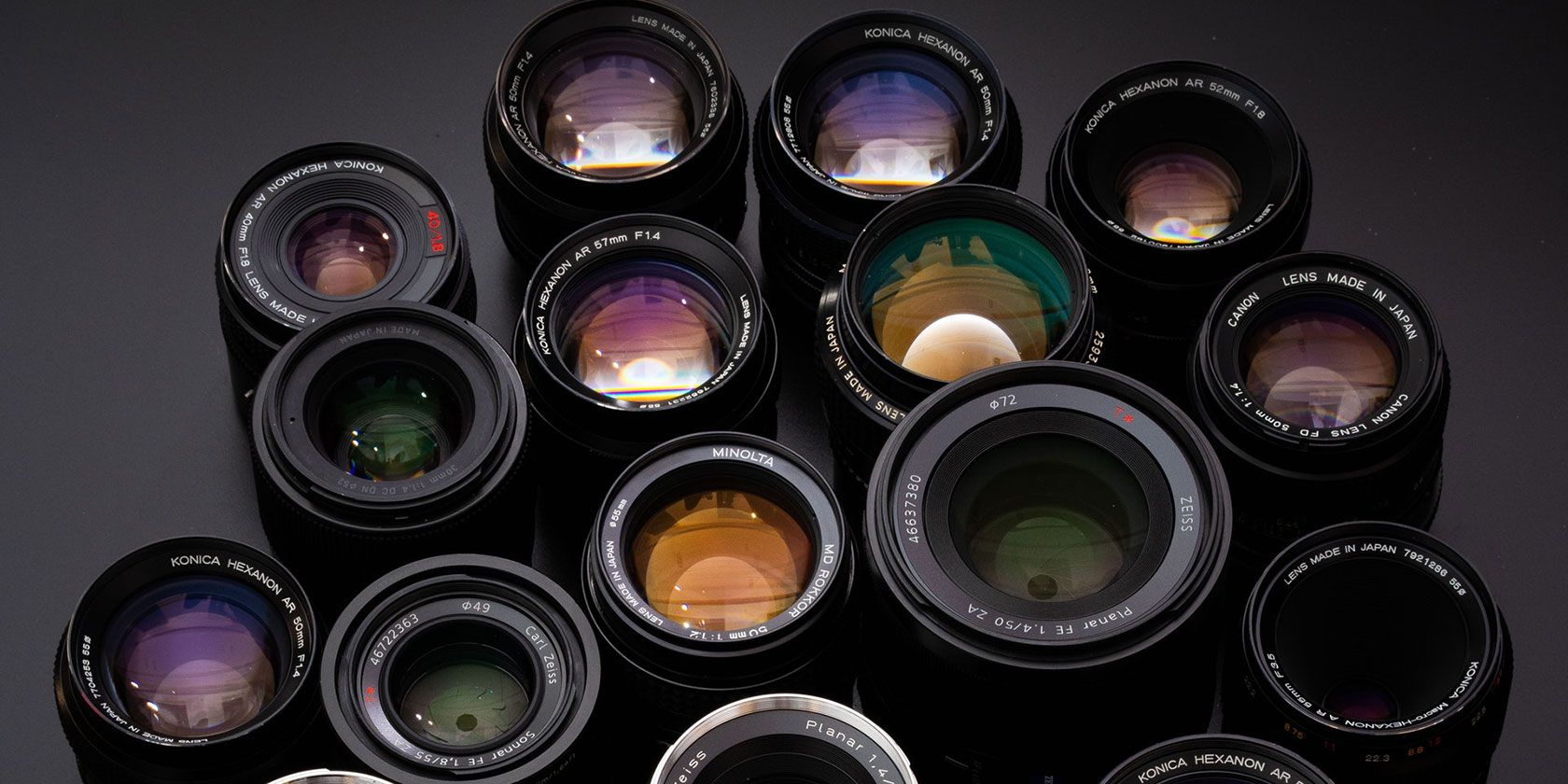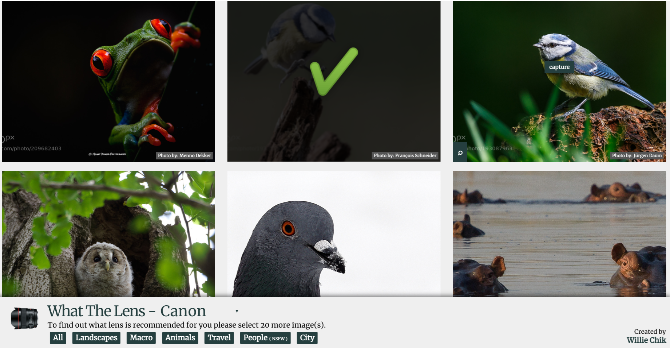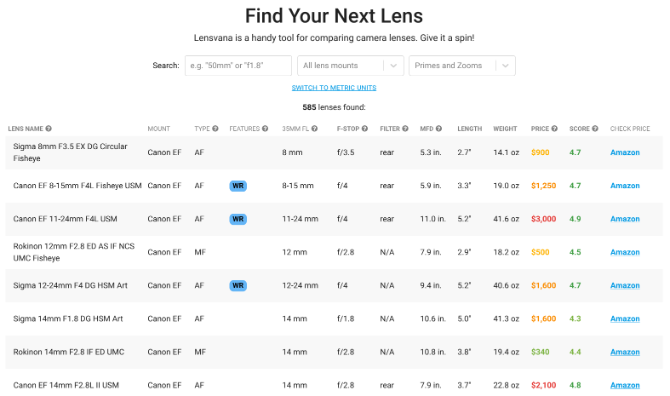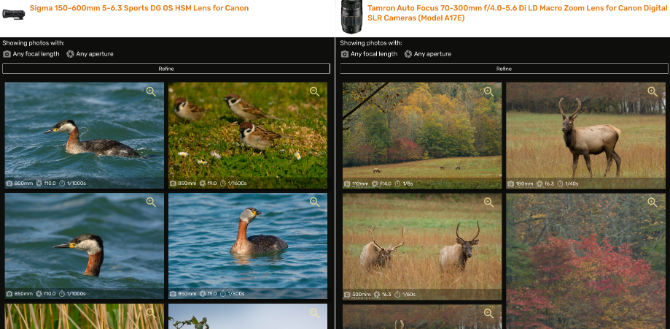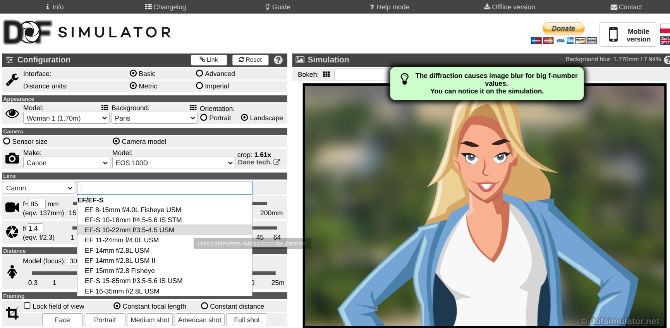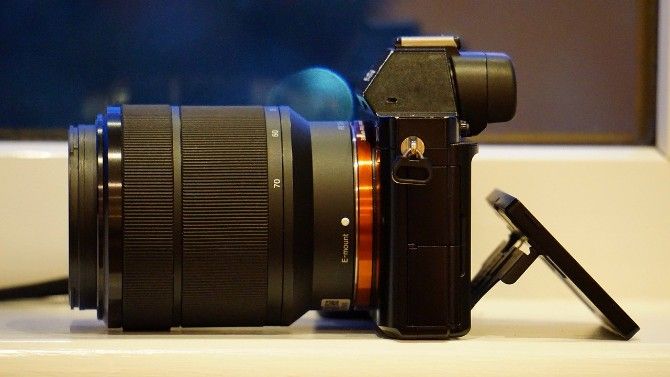You've got a great camera, but you need to pair it with a great lens. These guides and apps simplify how to select the best lens for your camera.
When you buy a DSLR or a mirrorless camera, it usually comes with a kit lens. But you can't limit yourself to that alone. You should have at least one of the five common photo lenses for cameras, and perhaps more if you have specialized interests in photography.
But buying the right lens can be a difficult process. There are several experts reviewing cameras and coming up with questionnaires and quizzes to select one for you, but it's a more limited list when it comes to lenses. Still, there are these guides you can check.
1. What The Lens (Web): Like Photos, Get Lens Recommendation
Most of the online lens buying guides rely on the user already knowing a bit of what they want. But for amateurs and beginners who lack technical knowledge, What The Lens takes a different approach by recommending lenses based on pictures you like.
In the first step, you have to ideally select a camera brand and the category of photos you are most likely to take with the new lens. What The Lens will then load a number of photographs. Go through the list and click the ones you like, i.e. these should be the types of photos that you want to take with your new lens.
After you like 20 photos, the app will recommend a new lens that goes with your camera, along with links to buy it on Amazon or Adorama. You can also try the test with different categories of photos, or pick more photos in the same test to get a different lens recommendation.
2. Lensvana (Web): Detailed Lens Comparison Tables
When you want to compare multiple camera lenses for your DSLR, you might want to line up their specifications in a neat spreadsheet. Lensvana has already done that for you, along with a little extra data.
The catalog of 585 lenses includes all the major brands, including Sigma and Tamron, and lays their details in a table. Data includes the type of mount, focus, focal length, aperture, filter thread size, minimum focus distance, length and weight, average Amazon custom rating, and price. It also notes whether the lens features weather seal or image stabilization.
You can quickly filter the list by the category, the type of lens mount, zoom or prime lenses, or by searching for terms you're looking for. You won't get reviews or other such data at this point, so treat Lensvana as the first stop to ensure you get all the features you're looking for.
3. Lens vs. Lens (Web): Compare Photos by Two Lenses
It's difficult to imagine exactly what the photos would look like after you buy a lens, which is often the toughest factor when choosing between two. Lens vs. Lens tries to give you a preview of what eventual photos will be like, even after applying settings.
First, add the two lenses you want to compare. The website already has a database of the most popular lenses, so you'll likely find them. Immediately, you'll see photographs taken with that lens by other photographers.
Lens vs. Lens further lets you refine the results based on focal length and aperture, which you can tweak for new photos. Set them to what you are likely to use on your own DSLR camera.
Click any image to see a larger version, and your mouse cursor acts as a magnifying tool. You can thus compare the results of two lenses in as much detail as possible before actually trying them with your own camera.
4. DOF Simulator (Web): Visualize How the Camera and Lens Will Look
Like Lens vs. Lens, photographer Michael Bemowski made a virtual simulator to get a better idea of what a camera and lens will create together. The DOF Simulator is a teaching tool for depth of field (DOF) and bokeh effects, depending on various settings.
The app lets you choose a camera and the lens before you start tweaking with the settings. You can have multiple models and backgrounds, the distance of the model from the camera, change the orientation between portrait and landscape, choose focal length and aperture, and the framing.
The simulation updates in real time, and it's a fantastic way to visualize the effects of your lens, helping you make an informed purchase. Combine the camera you own and the lens you're considering to simulate different scenarios before buying. The more you learn about depth of field, the better your photographs will look.
Download: DOF Simulator for Windows | macOS | Linux (Free)
Download: DOF Simulator for Android (Free)
5. Mirrorless Lens Guides (Web): Best Guides for Buying Mirrorless Camera Lens
Unless you're a professional photographer, it no longer makes sense to buy a DSLR camera. For hobbyists, travelers and almost anyone else, mirrorless cameras are better than DSLRs. But it's still a little difficult to find the perfect lens for a mirrorless camera. We scoured the internet for options and found a few great guides.
As part of their camera buying guides, Engadget put together an excellent article that explains what to look for in mirrorless camera lenses. There are multiple mounts for each brand, especially changing between full-frame and APS-C cameras. It then recommends the best prime and zoom lenses for each major brand.
If you want to jump directly to the best lenses, then check the round-up by Photo District News. It's a bit outdated but you'll get a clear recommendation for the 16 best mirrorless lenses, including third-party lens makers like Tokina and Venus Optics.
And as always, if you are still confused, turn to the internet's favorite camera and lens reviewer, Ken Rockwell.
Lenses for Types of Photography
All these apps and guides show that there is no overall "best" lens. You need to buy lenses depending on the type of photos you are going to snap most often.
To make things simpler, we identified 10 of the most popular things people like to click, such as vacations, architecture, wildlife, portraits, etc. Depending on what you will shoot regularly, here are the best camera lenses for each type of photography.

